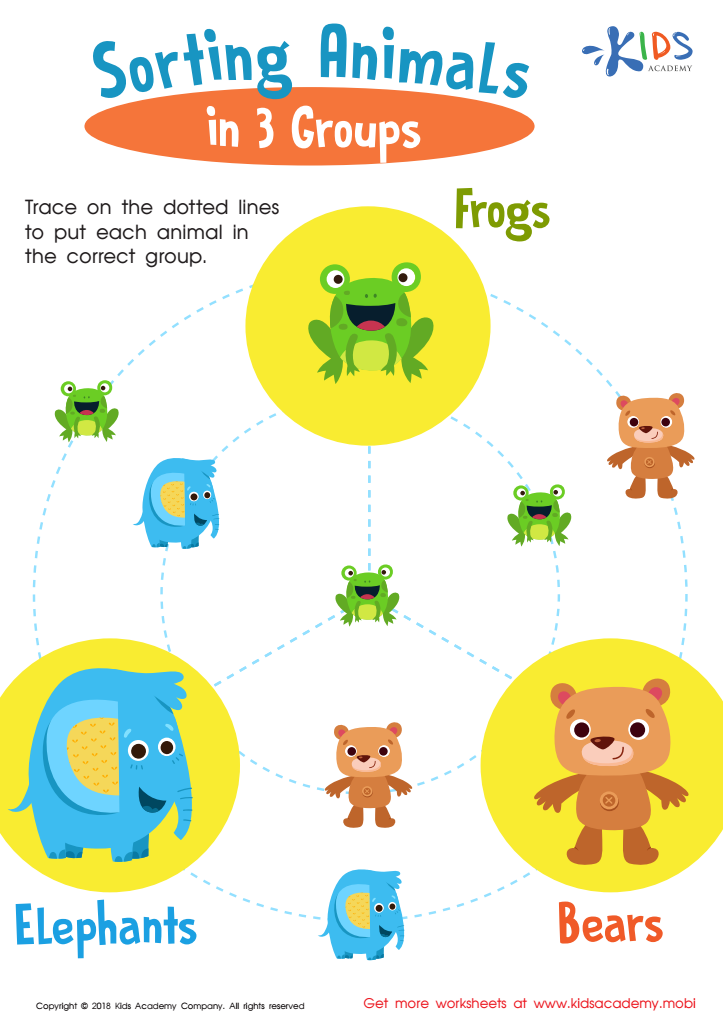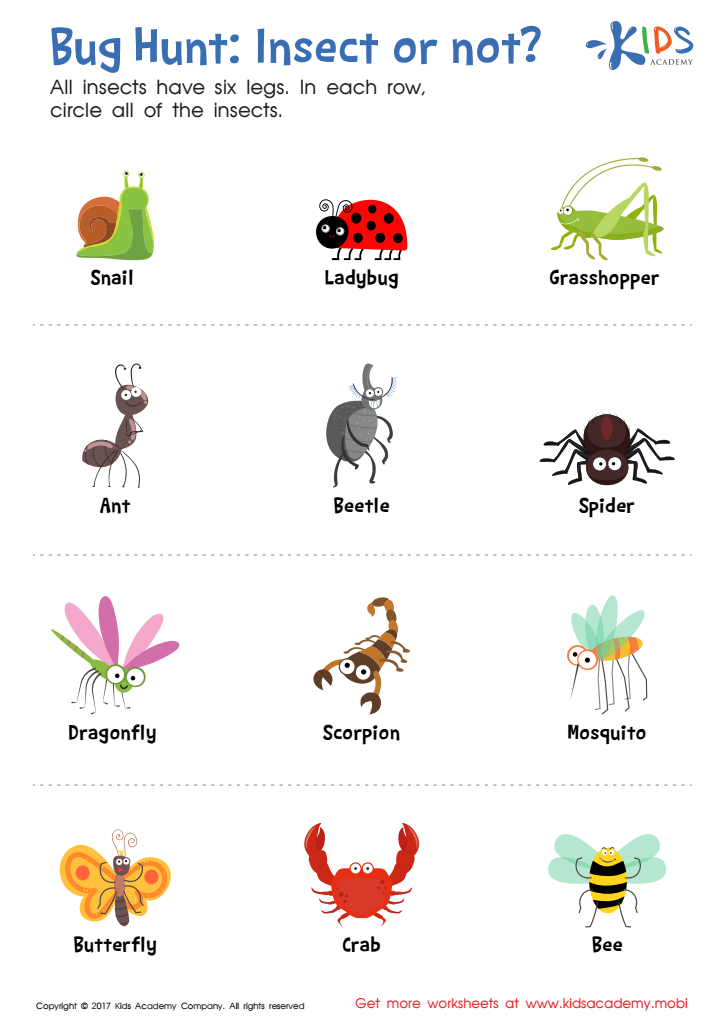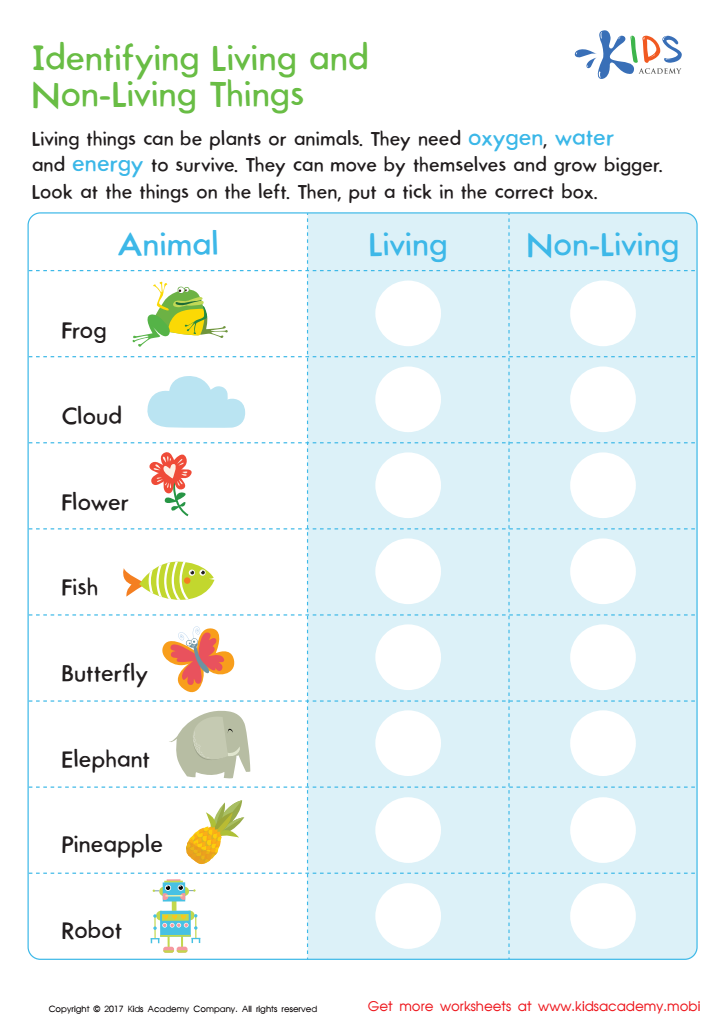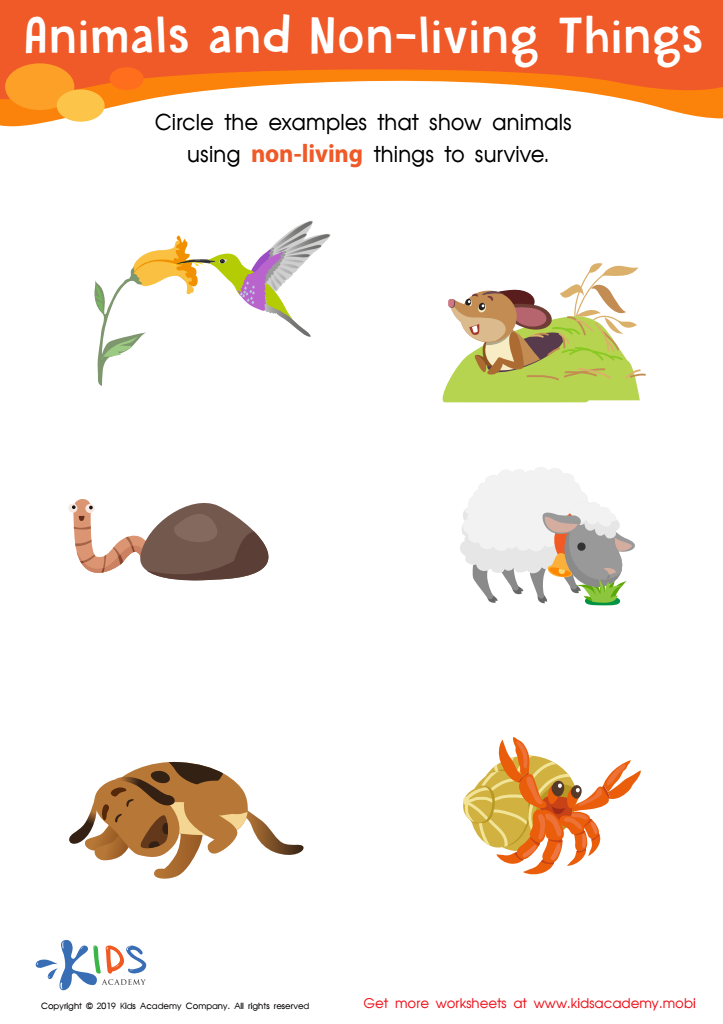Categorization skills Normal Science Worksheets for Ages 4-9
4 filtered results
-
From - To
Unlock your child's potential with our engaging Categorization Skills Worksheets designed for ages 4 to 9! These normal science worksheets help young learners develop critical thinking by sorting objects, plants, and animals based on various attributes. Perfect for enhancing vocabulary, comprehension, and analytical skills, our resources make learning fun and interactive. Kids will enjoy hands-on activities that encourage them to recognize similarities, differences, and relationships in the world around them. Tailored to meet educational standards, these worksheets provide a solid foundation in science while fostering curiosity and creativity. Explore the joy of learning through categorization and watch your child thrive!


Sorting Animals in 3 Groups Worksheet




Identifying Living or Non–living Worksheet


Animals and Non-Living Things Worksheet
Categorization skills are essential for children aged 4-9, as they form the foundation for critical thinking and problem-solving capabilities. During this stage of cognitive development, children learn to group objects, ideas, and experiences based on shared characteristics, which enhances their understanding of the world around them.
Parents and teachers should prioritize the development of categorization skills in various subject areas, particularly within the realm of science. By encouraging children to classify living and non-living things, categorize animals, or distinguish between different types of plants, they build a framework for scientific inquiry. Engaging children in hands-on activities, such as sorting objects, fosters observations and questions that lead to deeper exploration and understanding of scientific concepts.
Furthermore, categorization promotes vocabulary development; as children learn to label and describe groups, their language skills grow, aiding communication and expression. These skills support future academic success, helping students navigate more complex subjects like mathematics and reading. Ultimately, fostering strong categorization skills allows children to appreciate the interconnectedness of knowledge, paving the way for lifelong learning and curiosity about the world, making it vital for parents and educators to actively cultivate these skills in young learners.
 Assign to My Students
Assign to My Students




















